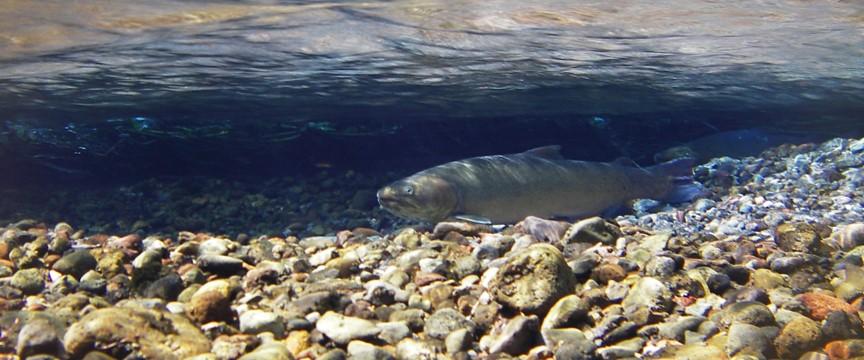Clackamas Bull Trout Re-Introduction Monitoring Project
Reintroducing Bull Trout to the Clackamas River
Bull Trout were extirpated from the Clackamas River basin almost 60 years ago. A reintroduction program was initiated in 2011 with the goal of establishing a self-sustaining population of 300-500 adults. In the translocation phase (2011-2016) of the program, 2,837 Bull Trout were captured in the Metolius River basin, PIT-tagged, and released in various sites within the Clackamas River basin where suitable habitat had been identified. Since translocations ended, we have conducted annual monitoring on the status of the reintroduction effort using census redd surveys, PIT-tag detection arrays, eDNA surveys, and stream temperature data loggers. Redd surveys have identified Pinhead Creek as the primary spawning area and have also detected spawning in the upper Clackamas River and Berry Creek. Environmental DNA surveys also suggest Bull Trout may be using Roaring River. Annual status monitoring continues, with a special focus on factors influencing survival to adulthood of locally-born fish.
For More Information
Project Contact: Steve Starcevich
Recent Reports:
- Starcevich, SJ. 2020. Clackamas River Bull Trout Reintroduction Project: Characterizing Status and Thermal Habitat Suitability in 2019. ODFW Progress Reports.
- Starcevich, Steven J. 2018. Clackamas River Bull Trout Reintroduction Project: Characterizing status and thermal habitat suitability in 2017 with census redd counts, PIT tag technology, eDNA surveys, and water temperature data loggers. ODFW Progress Reports.
- Starcevich, Steven J. 2018. Clackamas River Bull Trout Reintroduction Project: Characterizing status and thermal habitat suitability in 2018. ODFW Progress Reports.
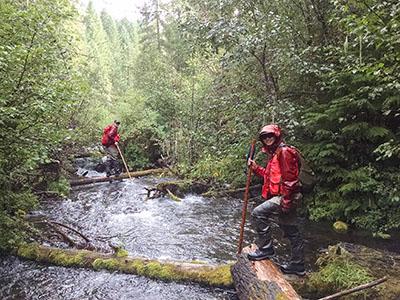
Census Redd Surveys
From late August through October, census redd surveys are conducted in known and potential Bull Trout spawning areas of the upper Clackamas River basin. Spawning Bull Trout, like other salmonids, lay their eggs in the gravel. We identify and count these redds (or nests) to keep track of the status of this population.
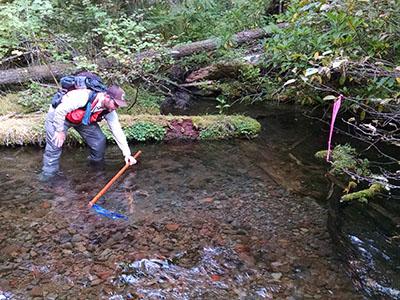
Redd Data
Since the initiation of the reintroduction project in 2011, redd surveys have been conducted annually. During census redd surveys, we georeference and measure the dimensions of each redd. We use these data to keep track of redd distribution and annual trends.
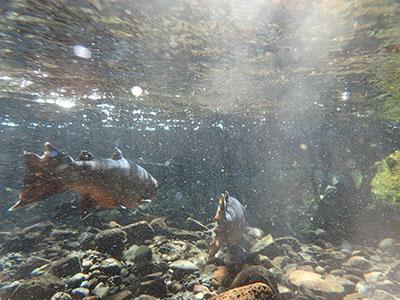
Adult Abundance
Annual census redd counts on Pinhead Creek have been calibrated with adult abundance estimated each year using PIT tag technology and a fish weir. There is a strong linear relationship between annual estimates of redd and adult abundance, which suggests that census redd surveys are an effective, low-cost technique for long-term monitoring of this population.
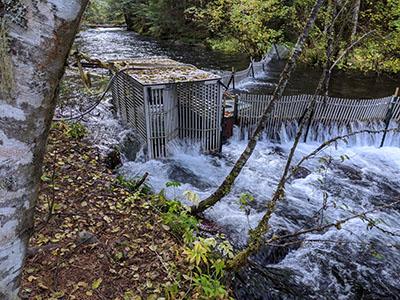
Fish Weir
In 2017, the U.S. Fish & Wildlife Service initiated annual monitoring of migratory adults during the Bull Trout spawning season (July-October) using a fish weir. This weir is equipped with three monitoring tools: 1) a PIT tag system used to detect PIT-tagged Bull Trout; 2) a fish trap used to subsample the adult population; and 3) a video station, which records all fish movement through the weir. The weir allows us to estimate adult abundance, migration timing, and length frequency, and monitor for the presence of locally-born adults.
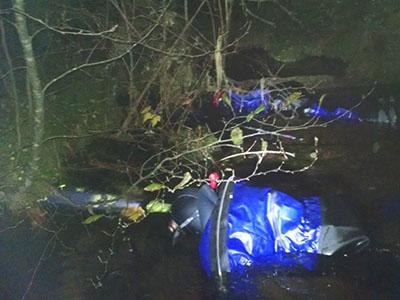
Night Snorkeling
Snorkel surveys are a useful technique to detect juvenile Bull Trout. Juvenile Bull Trout usually seek cover during the day, so these surveys are conducted at night to increase our detection probability.

Environmental DNA
Environmental DNA (or eDNA) surveys are very good at detecting the presence of low-density fish populations, so we use this method to help determine Bull Trout distribution in areas where they are rare. This is how eDNA surveys work: fish continuously shed DNA into the stream. We pump stream water through a very fine filter that can trap small organic molecules like DNA. We send the filter to a lab that can test for DNA sequences from Bull Trout using highly sensitive molecular tools. When Bull Trout eDNA is detected at a new site, we take a closer look with other monitoring techniques.
